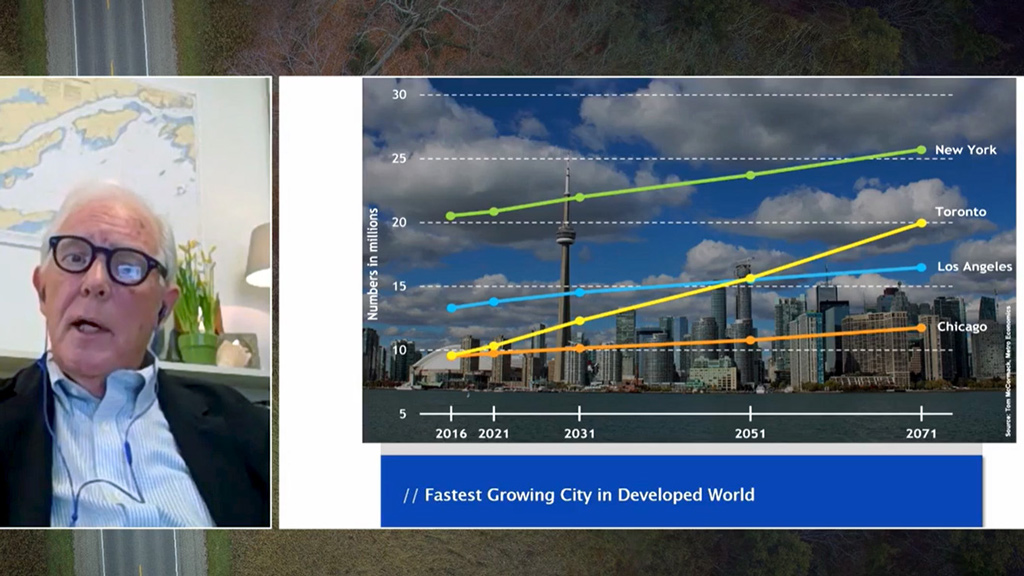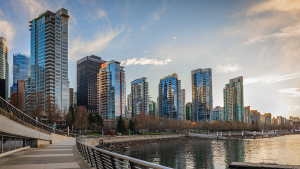Canadian metropolises will thrive despite the pandemic, but some things are going to change.
That was the message from Joe Berridge, a partner with Urban Strategies Inc., during the recent Ontario Good Roads Association virtual conference.
“The question really is about the resilient city,” said Berridge. “Some things will change and some things won’t change. I think the best indicator of how cities are going to work out is really what has happened in the decades before. The single most important thing is that Toronto will continue to be the fastest growing city in North America.”
What makes a resilient city?
Focusing on southern Ontario, Berridge said the things that make up a modern city include universities, financial services, innovation, culture, airports and cost of living.
“Office rents here are relatively low,” he noted. “That is a very important signifier for the success of the local economy. If you are a big tech company in the U.S. you are going to be attracted to Toronto not just because it’s got this wonderfully well-trained labour force but also because it has relatively inexpensive rents and relatively inexpensive costs of living.
“To my mind the fundamental dynamic is immigration,” Berridge said. “We are an extraordinary city in the quantity and quality of immigration that we accept.
“We have created here, right across the region, a kind of city that has never been invented before in the world, what I call a 50/50 city: 50 per cent not born in Canada, 50 per cent visible minorities. Other cities around the world get to a quarter or a third of that. Nobody gets to this kind of proportion.”
Pandemic has created change in the city
In terms of changes, downtown office occupancy will shrink.
“I don’t think that downtown is going to become an empty canyon of empty buildings,” said Berridge. “I do think we are going to see both a smaller proportion of the workforce working in these offices for a smaller proportion of the day and week as more and more people are working at home.”
There will also be a radical restructuring of retail in the city, what he refers to as a “triage in shopping malls.”
Prior to COVID-19 a lot of shopping malls were closing all over North America and the pandemic accelerated that trend.
“If anybody told any of us that we were going to cope for a year without real shopping we all would have thought it was impossible, but it’s happened partly because we have been shopping less but also what was a relatively slow increase in e-commerce has just exploded,” said Berridge. “The major strong shopping malls are going to be fine. I suspect street retail, neighbourhood retail, is probably going to do OK but everything in between is going to have a huge challenge.
“All of us in the planning and infrastructure business are now going to have to cope with these kind of dead whale shopping malls in our regions and what are we going to do with them.”
The biggest change is going to be how we move around. Driving and transit has dropped significantly over the past year. There is some evidence that transit activity was flattening even before the pandemic and a dramatic rethinking and remarketing of transit is needed, Berridge advised.
“Frankly what we need is not more engineering on transit, we need more marketing,” he said. “We need to treat transit like a consumer product that is in competition with a whole bunch of other ways of moving around and we’ve got to reposition it.”
Social inequity a lesson from the pandemic
One of the lessons from the pandemic is high density living and working isn’t the problem, social inequity is, which can be seen in the way the virus disproportionately affects poorer areas of the city. According to Statistics Canada, only about 40 per cent of jobs are amenable to working from home and the rest are comprised of workers in construction, health care, manufacturing and delivery.
“All of us professionals with our degrees, able to sit on a couch and have meetings like this, we are the exception not the rule,” Berridge said. “The people that are doing the hard work in these cities are actually the people who live in these poor neighbourhoods. These are the ones who got sick.”
Will big cities die?
“No, I don’t think so, because the essential forces behind them are very strong,” said Berridge. “Will significant change happen in terms of where we live and how we live? A bit, but slowly.”
Follow the author on Twitter @DCN_Angela.











Recent Comments